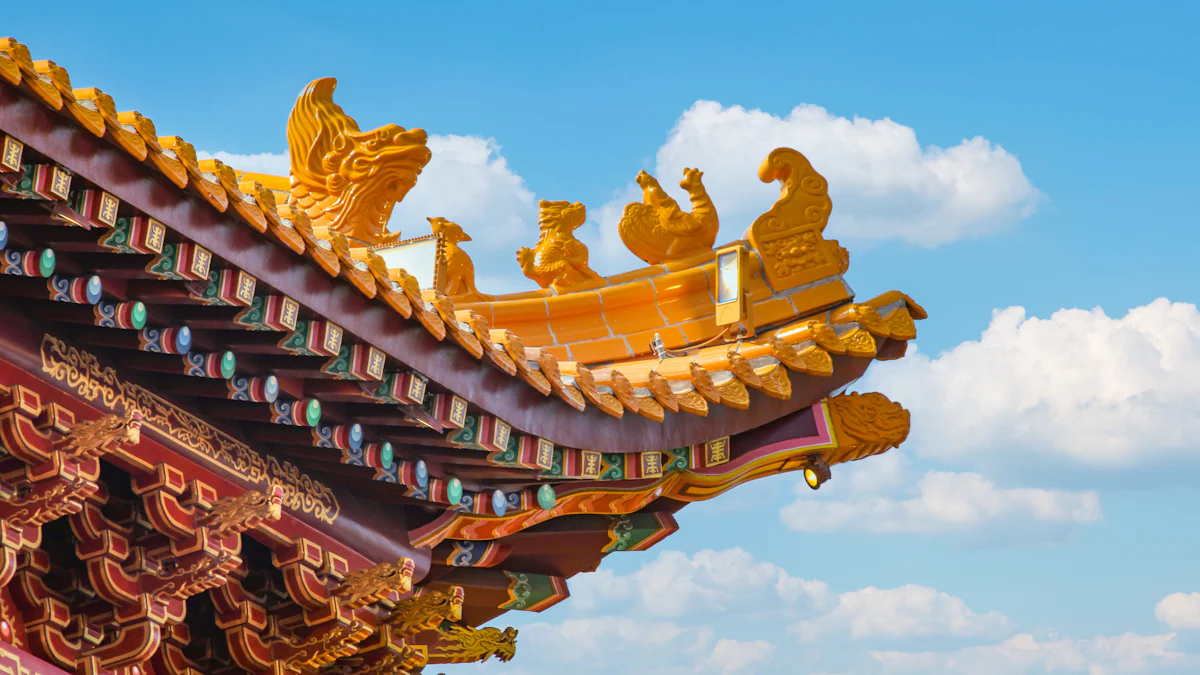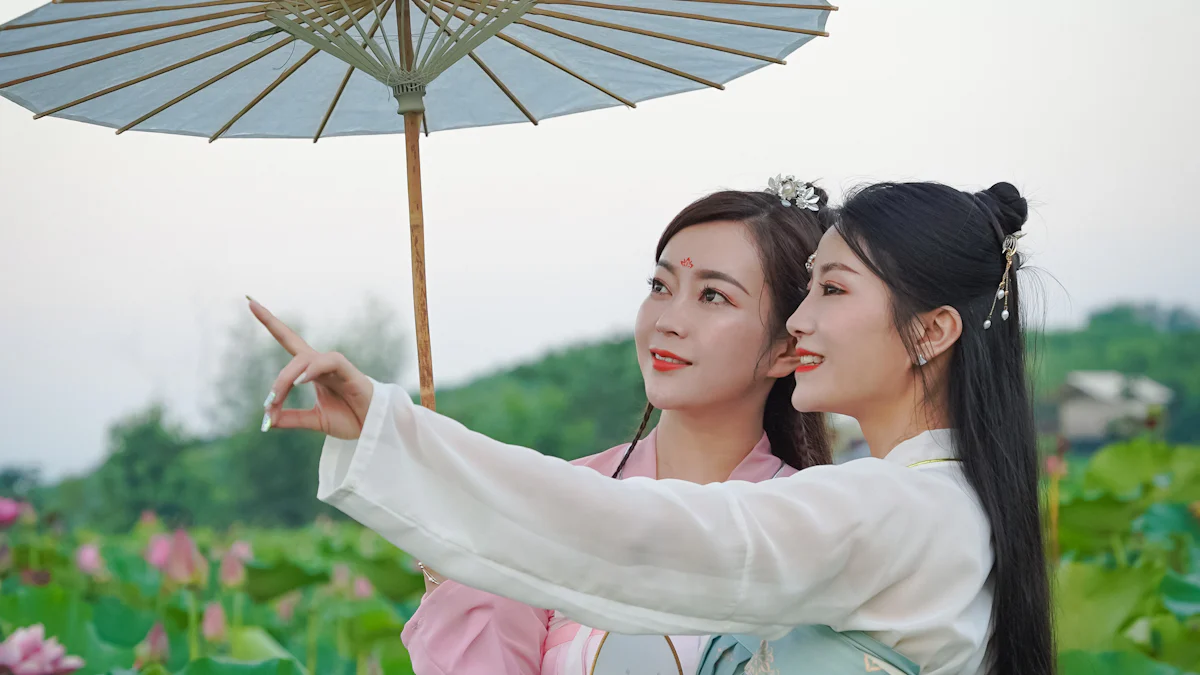
Exploring the realm of Hanfu clothes unveils a rich tapestry of tradition and cultural significance. The resurgence in popularity of these garments reflects a deep-rooted appreciation for heritage among the Han Chinese. Delving into this captivating world reveals not just attire, but a profound connection to history and identity. Let’s unravel five surprising facts that illuminate the allure and importance of Hanfu clothes.
Fact 1: Ancient Origins

Historical Background
In the early Han Dynasty, Hanfu clothes emerged as a symbol of status, with distinct designs and colors denoting various social ranks. These garments were deeply intertwined with daily life, adapting to different occasions like festivals and ceremonies. The traditional Hanfu robe, adorned with intricate embroidery, can be traced back to this era. Over centuries, Hanfu clothes evolved, leading to a diverse range of styles seen across different Chinese regions today.
Cultural Significance
Symbolism in Hanfu clothes goes beyond mere attire; it embodies a connection to history and heritage. The influence of Hanfu on other cultures highlights its universal appeal and timeless elegance. Through the intricate designs and fabrics used in Hanfu clothing, wearers express respect for tradition and cultural continuity.
Fact 2: Revival Movement

Modern Resurgence
Social media platforms like Bilibili and Douyin have played a crucial role in the resurgence of Hanfu clothes. Enthusiasts showcase their creativity and personal interpretations of the attire through photos and videos, sparking interest among a wider audience. This surge in interest among youth has led to a newfound appreciation for traditional clothing, with users sharing their unique styles on various online platforms.
Cultural Events
Hanfu Festivals and Educational Workshops have become integral parts of the modern Hanfu movement. These events provide opportunities for individuals to immerse themselves in the rich history and cultural significance of Hanfu. Through interactive workshops and vibrant festivals, participants can learn about traditional techniques, historical contexts, and the artistry behind Hanfu clothing.
Fact 3: Brocade Production
Traditional Techniques
Handwoven Brocade
Creating Hanfu clothes involves intricate craftsmanship, especially in the production of handwoven brocade. Skilled artisans meticulously weave threads together to form exquisite patterns and designs that adorn these traditional garments. The process requires patience and precision, reflecting a deep respect for the artistry behind each piece.
Artisans’ Role
Artisans play a pivotal role in preserving the legacy of Hanfu clothes through their dedication to traditional techniques. Their expertise ensures the authenticity and quality of each garment, embodying centuries-old traditions passed down through generations. By honoring the artisan’s craft, wearers not only don clothing but also carry forward a cultural heritage that transcends time.
Supply and Demand
Increasing Popularity
The increasing popularity of Hanfu clothes has led to a surge in demand for handcrafted brocade. As more individuals embrace traditional attire, there is a growing appreciation for the intricate details and unique beauty of handwoven fabrics. This resurgence in interest highlights a cultural reawakening that values craftsmanship and artistry.
Production Challenges
Despite rising demand, artisans face challenges in meeting the growing needs for handwoven brocade. The time-intensive nature of the craft and limited skilled labor pose obstacles to scaling production efficiently. Balancing tradition with modern demands presents a delicate challenge as artisans strive to uphold quality while meeting the market’s needs.
Fact 4: Inclusivity
Universal Appeal
Hanfu clothes exhibit a universal appeal that transcends borders and cultures. The acceptance of Hanfu clothes across various regions reflects a shared admiration for the intricate designs and rich history they embody. Individuals from diverse backgrounds find common ground in appreciating the artistry and cultural significance of these traditional garments.
Non-Religious Significance
The significance of Hanfu clothes extends beyond religious affiliations, making them accessible to individuals of all beliefs. By embracing Hanfu clothes, wearers connect with a heritage that surpasses religious boundaries, emphasizing the broader cultural value embedded in these attire. This non-religious aspect allows people from different faiths to engage with Hanfu clothes as a celebration of tradition and craftsmanship.
Fashion and Function
Everyday Wear
Incorporating Hanfu clothes into daily attire adds a touch of elegance and cultural pride to everyday life. The versatility of these garments allows individuals to infuse their wardrobe with pieces that reflect both personal style and traditional roots. Embracing Hanfu clothes as everyday wear is a way to honor heritage while making a fashion statement that resonates with modern sensibilities.
Special Occasions
For special occasions, donning Hanfu clothes elevates the event with a sense of grandeur and historical significance. Celebratory moments become even more memorable when adorned in the intricate designs and vibrant colors of traditional Han Chinese attire. Whether it’s festivals, ceremonies, or gatherings, wearing Hanfu clothes adds a touch of cultural richness to every special occasion.
Fact 5: Political History
Historical Bans
During the Qing Dynasty, restrictions on Hanfu clothing were enforced to assert Manchu cultural dominance, enforce conformity, and prevent cultural resistance. The ban was motivated by political, cultural, and social factors that aimed to solidify the ruling power of the Manchurian rulers. By restricting the wearing of traditional Han Chinese attire, the Qing Dynasty sought to establish a sense of uniformity and control over the populace. This prohibition on Hanfu clothing symbolized more than just a dress code; it represented a suppression of cultural identity and a means of exerting authority over the Han Chinese population.
In the Mao Zedong era, further restrictions were imposed on Hanfu clothing due to its association with imperial times. The Communist regime viewed traditional attire as a relic of feudalism that contradicted the principles of socialism. By discouraging the wearing of Hanfu, Mao Zedong aimed to promote a unified socialist culture that aligned with his vision for a modern China. The ban during this period reflected political ideologies that sought to eradicate symbols of China’s imperial past in favor of a new revolutionary identity.
Modern Acceptance
In contemporary times, there has been a resurgence in embracing Hanfu clothing as part of cultural reclamation efforts. Individuals and groups advocate for the preservation and promotion of traditional attire as a way to reconnect with Chinese heritage and reclaim cultural identity. Through grassroots movements and government support initiatives, there is a growing acceptance and appreciation for Hanfu as more than just clothing but as a symbol of cultural continuity and pride. This modern acceptance signifies a shift towards recognizing the historical significance and artistic value embedded in Hanfu garments.
- Rediscovering an appreciation for Hanfu reflects cultural confidence, with more individuals proudly wearing it in public as a symbol of heritage and tradition.
- Wearing Hanfu is a profound way to connect with roots and express respect for traditional Chinese culture, embodying cultural pride and identity.
- The resurgence of Hanfu signifies a cultural movement seeking to redefine Chinese identity, representing a captivating journey of cultural rediscovery and self-expression.
- Hanfu is not just a fashion statement; it’s a cultural artifact that embodies the essence of traditional Chinese civilization.
- The Hanfu Movement provides a platform for younger generations to embrace Chinese culture and reconnect with their rich heritage.






